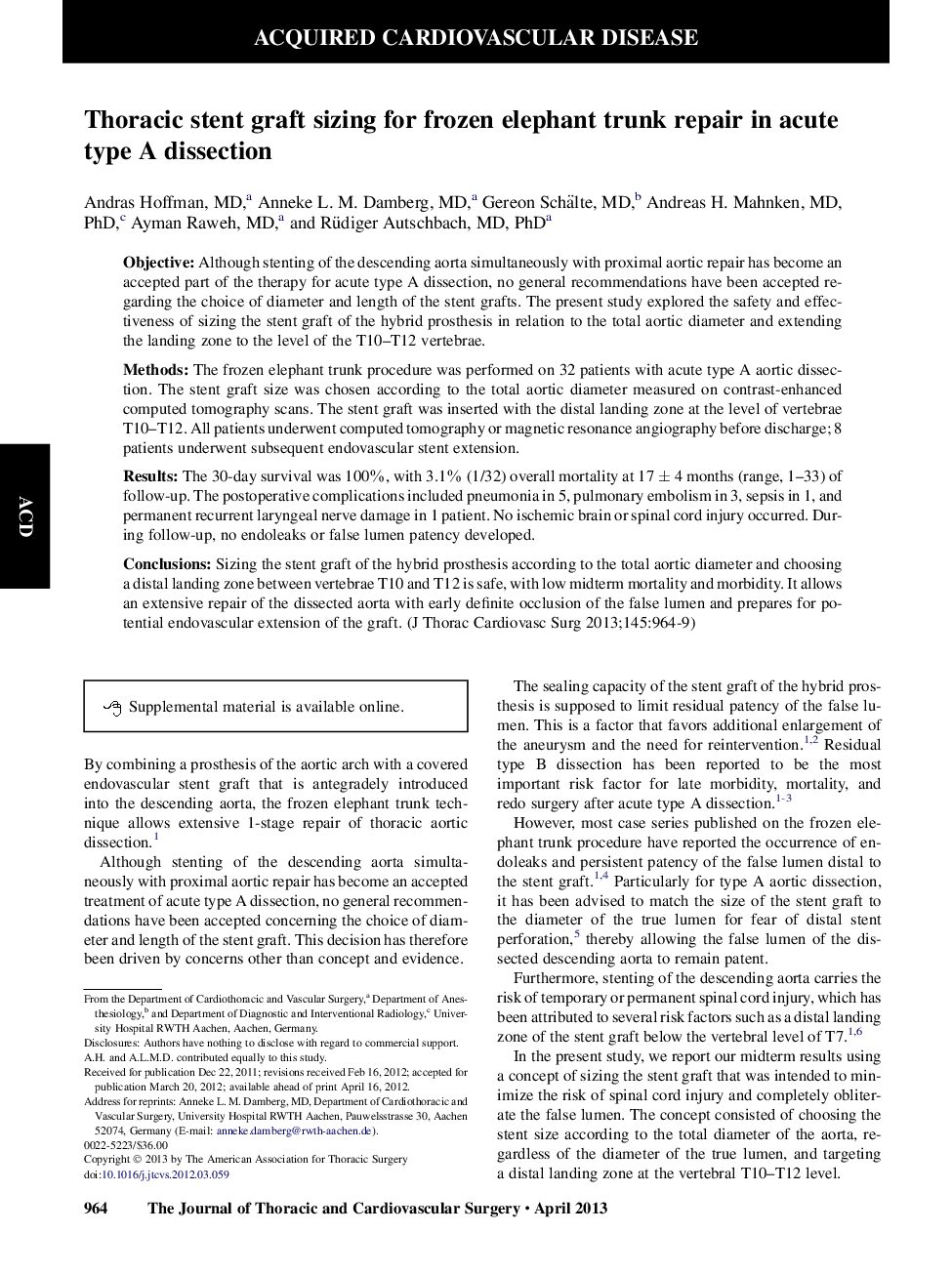| Article ID | Journal | Published Year | Pages | File Type |
|---|---|---|---|---|
| 5989981 | The Journal of Thoracic and Cardiovascular Surgery | 2013 | 7 Pages |
ObjectiveAlthough stenting of the descending aorta simultaneously with proximal aortic repair has become an accepted part of the therapy for acute type A dissection, no general recommendations have been accepted regarding the choice of diameter and length of the stent grafts. The present study explored the safety and effectiveness of sizing the stent graft of the hybrid prosthesis in relation to the total aortic diameter and extending the landing zone to the level of the T10-T12 vertebrae.MethodsThe frozen elephant trunk procedure was performed on 32 patients with acute type A aortic dissection. The stent graft size was chosen according to the total aortic diameter measured on contrast-enhanced computed tomography scans. The stent graft was inserted with the distal landing zone at the level of vertebrae T10-T12. All patients underwent computed tomography or magnetic resonance angiography before discharge; 8 patients underwent subsequent endovascular stent extension.ResultsThe 30-day survival was 100%, with 3.1% (1/32) overall mortality at 17 ± 4 months (range, 1-33) of follow-up. The postoperative complications included pneumonia in 5, pulmonary embolism in 3, sepsis in 1, and permanent recurrent laryngeal nerve damage in 1 patient. No ischemic brain or spinal cord injury occurred. During follow-up, no endoleaks or false lumen patency developed.ConclusionsSizing the stent graft of the hybrid prosthesis according to the total aortic diameter and choosing a distal landing zone between vertebrae T10 and T12 is safe, with low midterm mortality and morbidity. It allows an extensive repair of the dissected aorta with early definite occlusion of the false lumen and prepares for potential endovascular extension of the graft.
